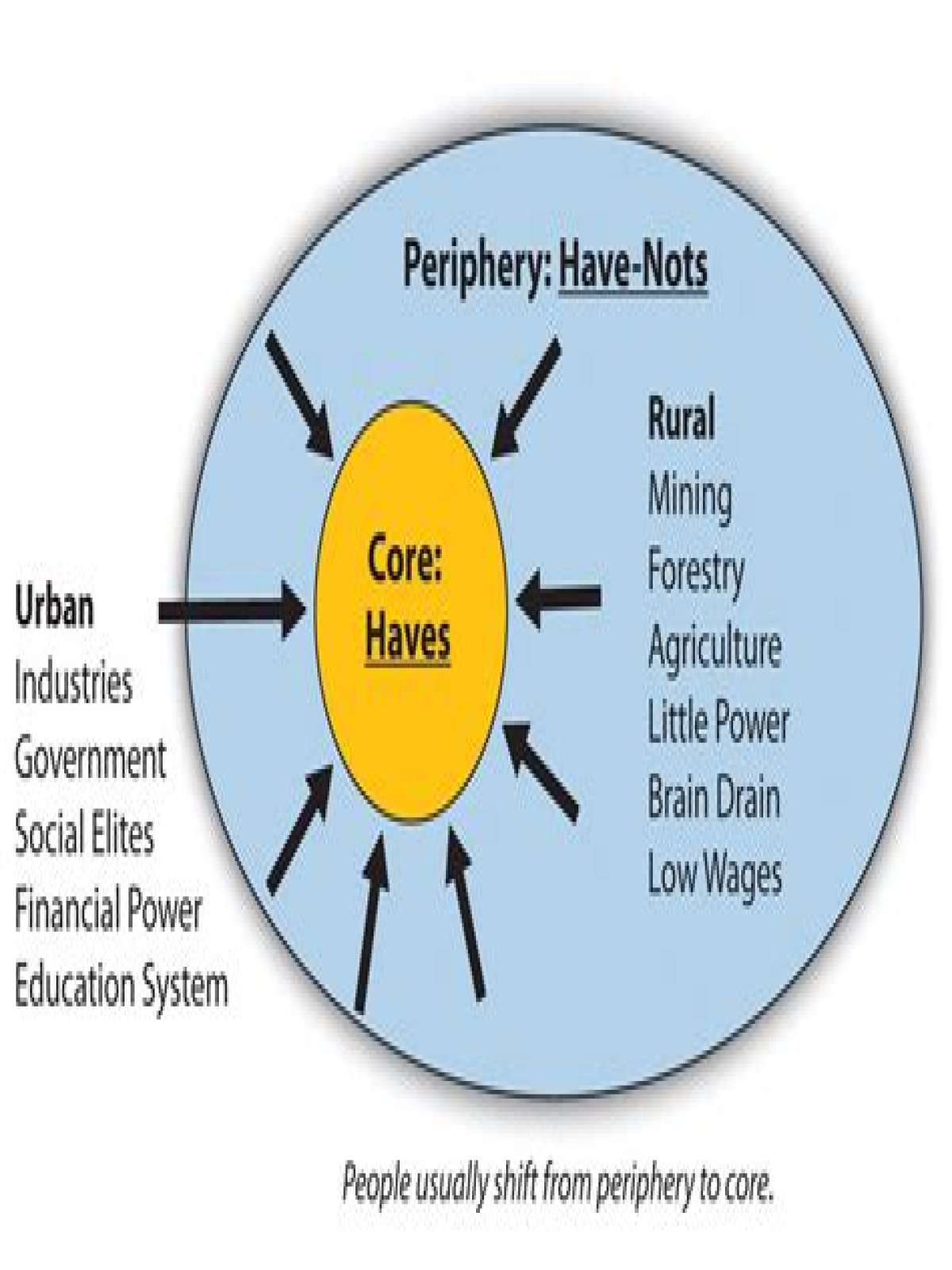core periphery model
A model of the spatial organization of human activity based upon the unequal distribution. of power in economy and society. The core dominates (although it in turn may be dominated. from outside) whilst the periphery is dependent.
What is an example of core periphery?
A great example of the Core-Periphery model is Brazil, with the ‘golden triangle’ at its core and the Amazon as its main peripheral area. Within cities like Sao Paulo, Belo Horizonte, and Prio de Janeiro, overheating has become a serious problem.
What is the periphery in the core periphery model?
The countries of the world can be divided into two major world regions: the “core” and the “periphery.” The core includes major world powers and the countries that contain much of the wealth of the planet. The periphery has those countries that are not reaping the benefits of global wealth and globalization.
Which scholar is related to the concept of core and periphery?
Core-Periphery Hierarchy in World-Systems Theory by Immanuel Wallerstein (1974) The concept of the core-periphery model is also part of Wallerstein’s theory which he proposed in the 1970s to explain the genesis and functioning of capitalism while also seeking to interpret the phenomenon of globalization.
How do periphery states get to the core?
Stabilized government. One main way in which a periphery country can rise to semi-periphery or core status is through the stabilization of its government.
What is core periphery in geography?
• In political geography the heartland. (nucleus/center) of a state containing its most. developed area, greatest wealth, densest. population and clearest national identity (this. decreases as you move into the periphery area.
What are core periphery and semi-periphery countries?
Core countries are dominant capitalist countries that exploit peripheral countries for labor and raw materials. Peripheral countries are dependent on core countries for capital and have underdeveloped industry. Semi-peripheral countries share characteristics of both core and peripheral countries.
What is the relationship of the core and periphery?
The workers of the urban periphery turn the resources from the rural periphery into products for a mass market. Thus, the core is made up of a center and a periphery. At the periphery there is a center which has a harmony of interest with the center at the core.
What are the core countries of the core-periphery model?
The heart of the core countries consists of the United States, Canada, most of Western Europe, Japan, Australia and New Zealand. The population of the core is by far on average the wealthiest and best educated on the planet.
What is core-periphery model of regional development?
Friedmann’s version is called a “core-periphery four-stage model of regional development” that covers the following stages: pre-industrial, transitional, industrial, and postindustrial.
Who proposed the Centre periphery model?
Wallerstein (1974) developed a centre-periphery model at the world level, dividing the capitalist system into three levels of states—core, semiperiphery, and periphery—a model which can also be applied at the regional level.
What statement is an accurate representation of the core-periphery model?
What statement is an accurate representation of the core-periphery model? Conceptualization of the world into two economic spheres. The developed countries of western Europe, North America, and Japan form the dominant core, with less-developed countries making up the periphery.
What is the difference between the core and periphery?
The core—a central region in an economy, with good communications and high population density, which conduce to its prosperity—is contrasted with the periphery—outlying regions with poor communications and sparse population (for examples, see unemployment).
How a core exploits a peripheral country?
The core countries dominate and exploit the peripheral countries for labor and raw materials. The peripheral countries are dependent on core countries for capital. The semi-peripheral countries share characteristics of both core and peripheral countries. This theory emphasizes the social structure of global inequality.
What are the characteristics of core and periphery countries?
Periphery Countries 2022 Core countries — Produce products that require advanced skills and/or significant financial investment to make. Periphery countries — These are the least-developed and still developing countries. Semi-Periphery countries — These countries represent the intermediate state of development.
